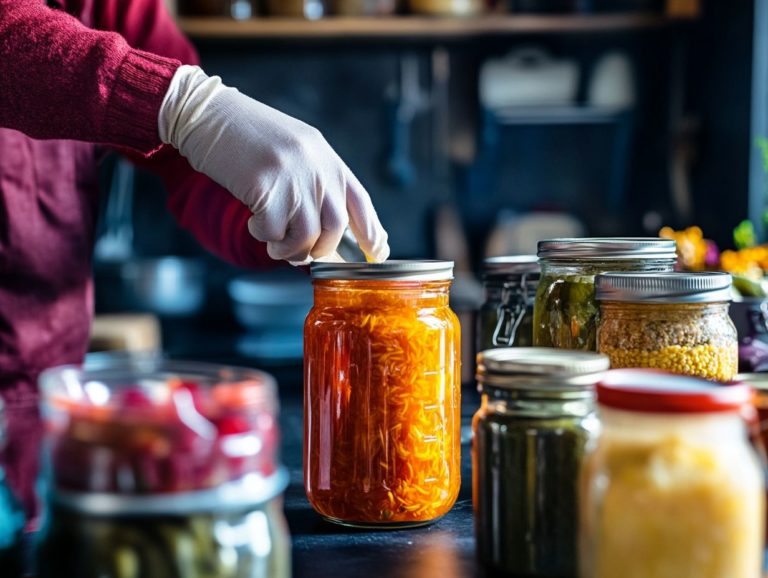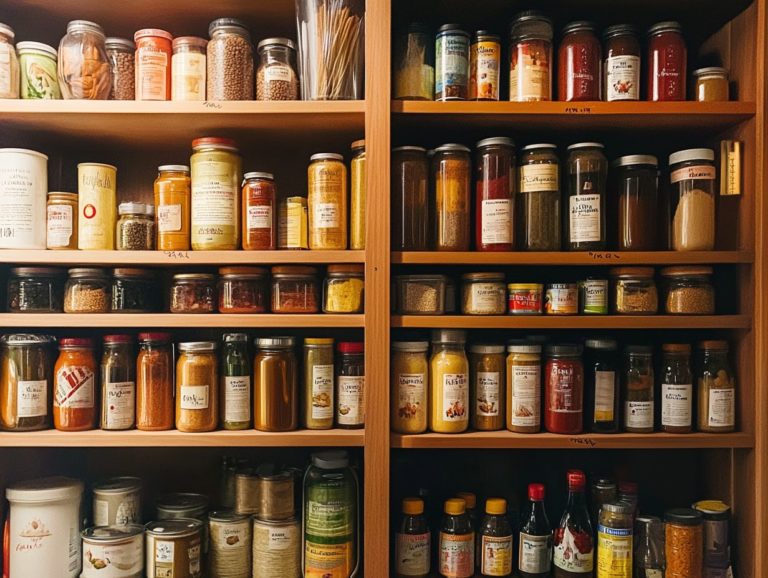Signs You’re Using Faulty Canning Equipment
Canning is an excellent method for preserving your favorite foods, but using faulty equipment can transform a rewarding experience into a risky endeavor.
It s essential to recognize the signs of malfunctioning canning gear to guarantee both the quality of your preserves and your safety. This guide outlines common indicators of faulty canning equipment, highlights the potential risks of using compromised tools, and provides practical tips for maintenance and repair.
Stay informed, and keep your canning adventures safe and fun!
Contents
- Key Takeaways:
- Common Signs of Faulty Canning Equipment
- Potential Risks of Using Faulty Canning Equipment
- How to Identify and Address Faulty Canning Equipment
- Frequently Asked Questions
- Why is it important to pay attention to signs of faulty canning equipment?
- How can I prevent faulty canning equipment?
- What should I do if I suspect my canning equipment is faulty?
- Can faulty canning equipment be repaired?
- Are there any warning signs to look out for when using canning equipment?
Key Takeaways:
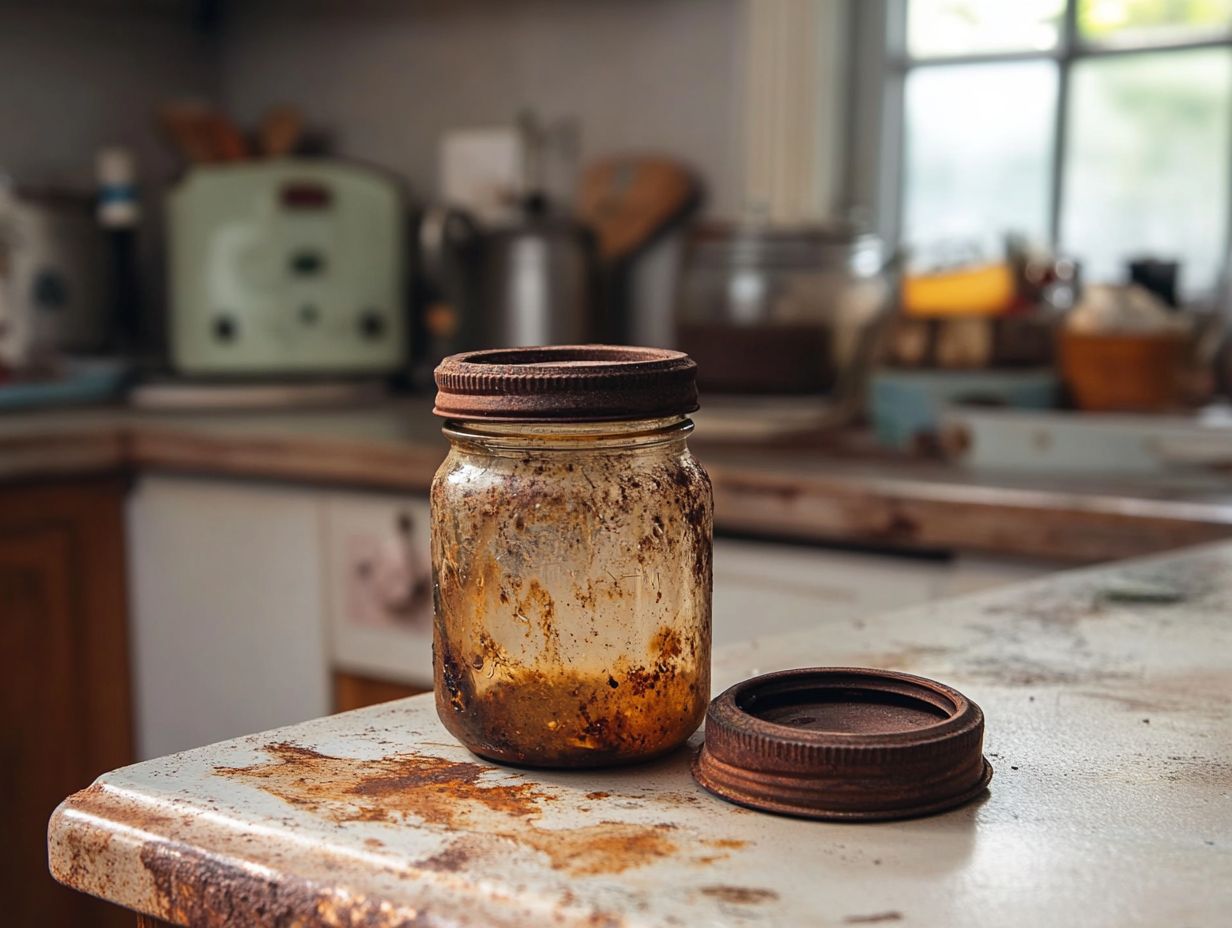
- Leaking or damaged seals are common signs of faulty canning equipment, which can lead to food spoilage and contamination.
- Difficulty sealing jars and broken or misaligned parts can also indicate faulty canning equipment, increasing the risk of foodborne illness.
- Regular maintenance and inspection, as well as promptly replacing or repairing faulty parts, are crucial in identifying and addressing faulty canning equipment to ensure safe food preservation.
What is Canning Equipment?
Canning equipment is a collection of essential tools and gadgets that you ll need to safely preserve food through methods like pressure canning and water bath canning. This includes jars, lids, and a pressure canner all meticulously designed to seal in freshness and prevent spoilage.
Using this equipment properly is crucial for ensuring food safety and maintaining the nutritional quality of your preserved items.
It s vital to follow the USDA recommended directions to avoid common canning issues, such as improper seals or contamination, which can lead to foodborne illnesses and spoilage.
Beyond the basics of jars and pressure canners, there are additional pieces of canning equipment that deserve your attention, including jar lifters, funnels, and bubble removers. Jar lifters allow you to handle hot jars safely, minimizing the risk of burns, while funnels help you pour cleanly and precisely into jars no more messy spills.
Bubble removers are there to eliminate air pockets that can compromise your seals. Throughout this process, always inspect your jars and lids for any cracks or defects, as these can jeopardize the integrity of your seals.
Sticking to processing guidelines is just as important; incorrect times or temperatures can affect both safety and quality. By keeping these practices in mind, you ll ensure that your preserved food remains safe and delicious for future enjoyment.
Common Signs of Faulty Canning Equipment
Recognizing the common signs your canning equipment needs replacement is essential for maintaining food safety and preventing spoilage. Watch out for issues such as jars that aren’t sealed properly, leaking seals, or damaged lids—all of which can signal potential problems that require immediate attention.
Improper packing and missing a sealing surface can compromise the integrity of your canned goods. By conducting regular jar inspections and following the processing guidelines, you can identify what to check when jars don’t seal before they lead to food contamination.
Leaking or Damaged Seals
Leaking or damaged seals are immediate red flags in your canning process that require swift action to ensure food safety. A compromised seal allows air bubbles to sneak in, which can mess with vacuum sealing (a method that removes air to preserve food) and heighten the risk of food spoilage and contamination from harmful bacteria. To address these concerns, refer to troubleshooting pressure canning issues, including risks like Clostridium botulinum, the notorious producer of botulism toxin.
Always inspect your lids for damage before canning and ensure that the sealing surface is clean and dry.
Improper sealing techniques, such as using worn-out lids or not sticking to recommended processing times, can worsen the situation, leading to failed seals. Environmental factors like extreme temperatures can also weaken seal integrity.
To mitigate these risks, it s best to use high-quality, manufacturer-recommended lids and ensure that your jars are filled to the proper headspace. Maintaining a consistent temperature during processing and allowing jars to cool gradually can markedly increase your chances of achieving a secure seal, protecting your contents and extending their shelf life.
Difficulty Sealing Jars
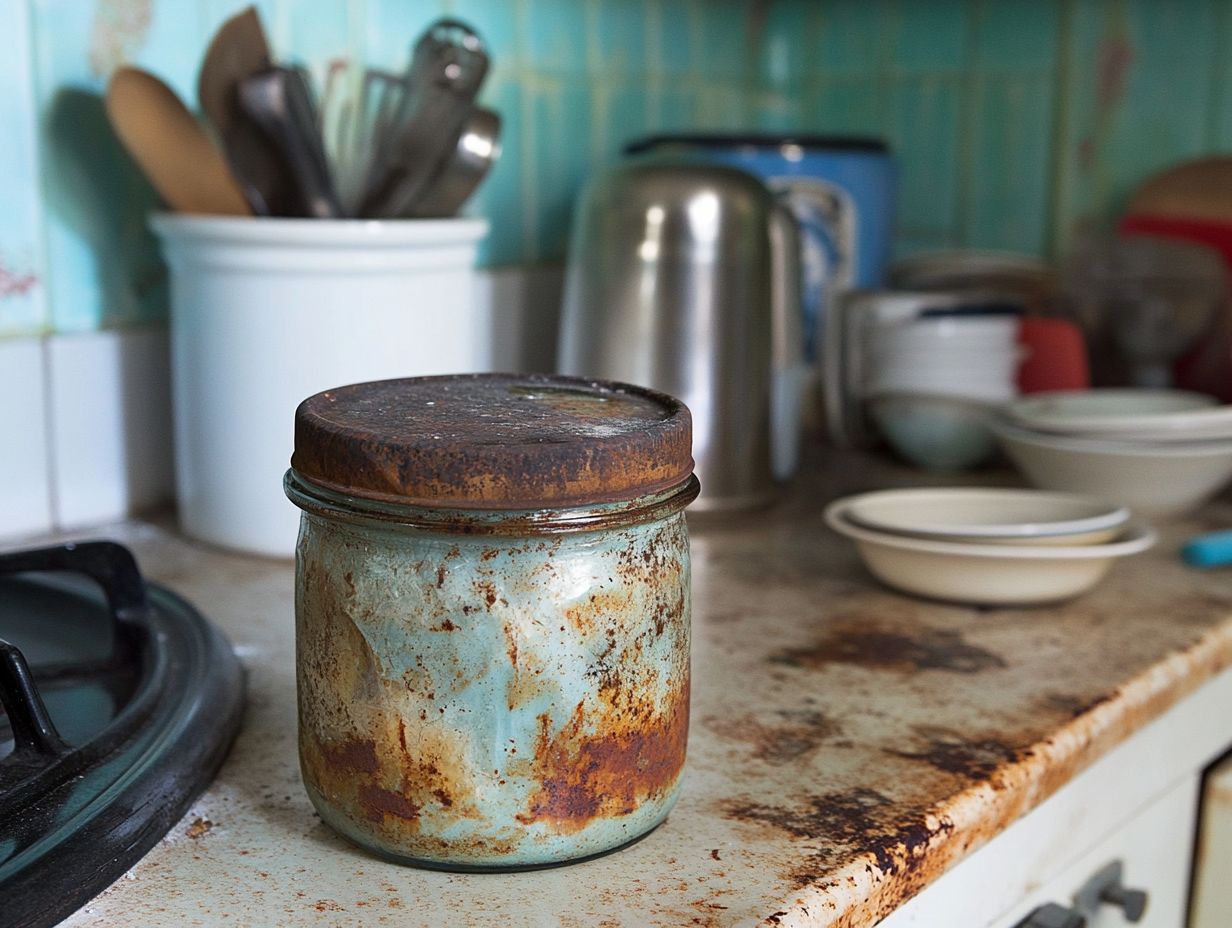
Experiencing difficulty in sealing jars can be frustrating and worrisome. It often results in food spoilage and undermines the success of your canning efforts.
Several common causes contribute to this issue, including improper packing of both high-acid and low-acid foods, insufficient air removal, and inadequate headspace adjustments the space between the food and the lid of the jar within the jars. By closely following the manufacturer’s directions, you can mitigate these challenges and achieve a proper seal.
To effectively tackle these sealing difficulties, it’s essential to grasp the importance of proper techniques throughout the canning process. For high-acid foods like fruits and tomatoes, correct packing is vital for developing a robust vacuum seal.
Removing as much air as possible before sealing perhaps using a food processor or specialized tools can significantly enhance your results! Adjusting the headspace around one inch creates enough room for food expansion without compromising the jar’s integrity.
By implementing these methods, you can greatly improve your preservation efforts and enjoy successful canning outcomes!
Broken or Misaligned Parts
Broken or misaligned parts in your canning equipment can create inefficiencies and heighten the risk of food spoilage. To avoid these issues, it’s helpful to refer to troubleshooting common canning problems and ensure that tools like pressure canners and jar lifters are functioning properly to achieve effective food preservation.
Regular maintenance think cleaning surfaces and checking for wear and tear can help you avert these issues and keep your canning process running at peak performance.
Neglecting these critical components could jeopardize the quality of your food. It may lead to unsafe seal failures or uneven heat distribution. Inspect your valves, gaskets, and seals regularly for any signs of damage, as these elements are key to maintaining the pressure required during canning.
Scheduling periodic professional servicing can significantly enhance the longevity and efficiency of your equipment. This ensures that each batch of preserved fruits or vegetables meets the highest standards of freshness and safety.
By adopting a consistent maintenance routine, you ll not only protect your food but also enjoy the peace of mind that comes with mastering the best preservation techniques!
Potential Risks of Using Faulty Canning Equipment
Utilizing faulty canning equipment presents serious risks to food safety, potentially leading to contamination and the proliferation of harmful bacteria. When jars aren’t sealed correctly, air can infiltrate, creating an environment ripe for botulism toxin production. For proper methods, check out our guide on troubleshooting canning jar preparation, which can help prevent severe foodborne illnesses.
It’s crucial for anyone involved in food preservation to grasp these risks fully and ensure that safety protocols are rigorously followed throughout the canning process to prevent issues like botulism.
Contamination and Spoilage
Contamination and spoilage are among the most critical concerns you ll face when preserving food through canning. An improper seal can invite bacteria and contaminants, potentially compromising the quality and safety of the contents inside your jars.
To navigate these risks effectively, it s essential to adhere to proper canning techniques and safety practices, thus enhancing food preservation and ensuring a healthy end product.
Certain types of spoilage, like mold growth or fermentation, often stem from insufficient processing times or temperatures. The presence of harmful bacteria, particularly botulism, becomes a serious threat when acid foods aren t canned correctly.
It s imperative for anyone engaged in food preservation to understand the necessary pH levels and temperature controls specific to various foods. By using tested recipes and reliable canning methods, you not only reduce the risk of these issues but also elevate the overall quality of your preserved goods.
Promote safer consumption and maximize shelf life by starting to refine your canning techniques today for fresher, safer food!
Increased Risk of Foodborne Illness
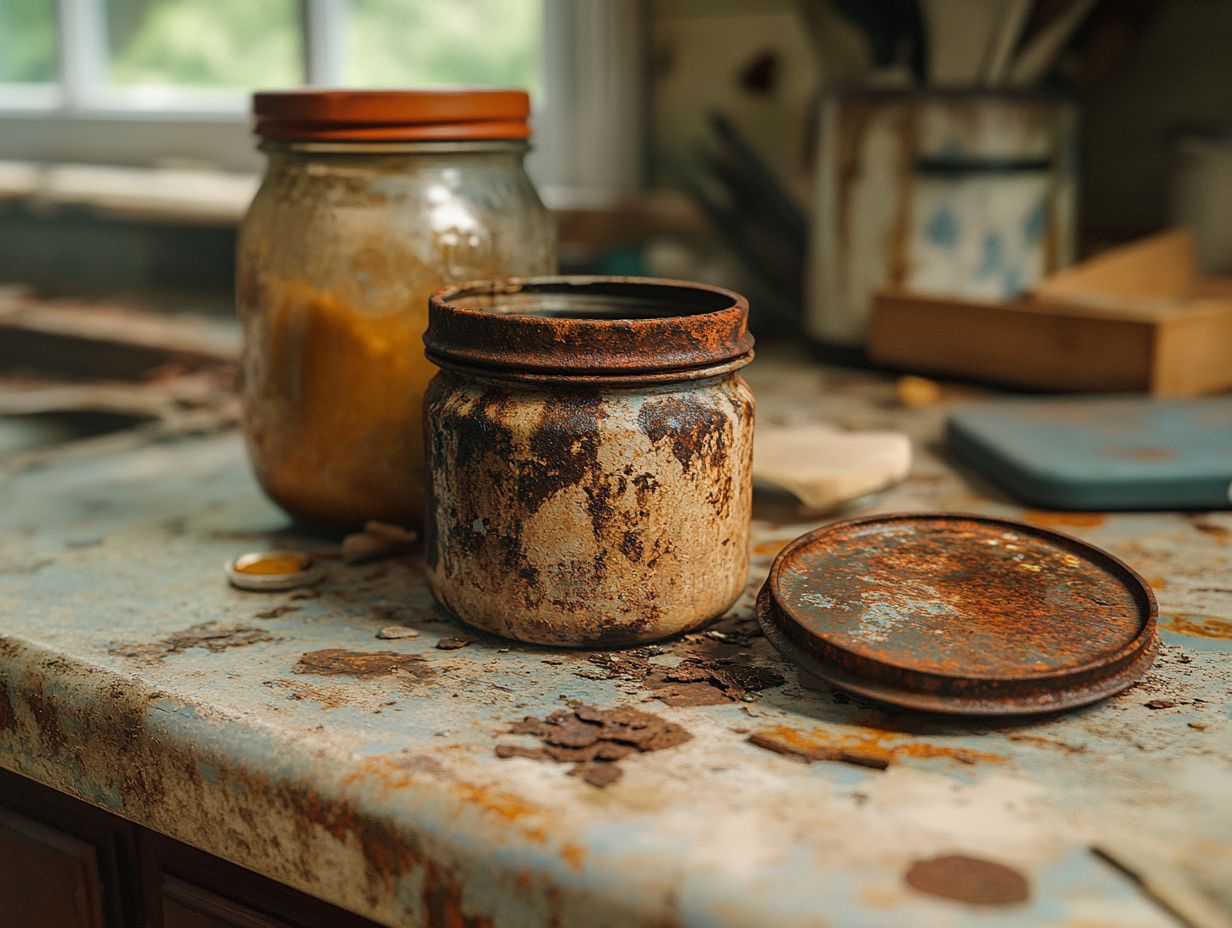
The increased risk of foodborne illnesses is a serious consequence of improper canning, particularly when it comes to low-acid foods. One of the most dangerous potential outcomes is botulism, a dangerous substance that can cause severe illness, caused by the botulinum toxin. It s crucial for you to process food according to the recommended guidelines to mitigate the risk of foodborne illness and ensure safe consumption.
If you engage in home canning, you might underestimate the critical importance of pH levels and pressure canning for low-acid foods, such as vegetables and meats. These foods are especially prone to bacterial growth. Failing to adhere to specific temperature and timing requirements allows spores to thrive and produce harmful toxins. Relying on outdated or untested techniques can further heighten this risk.
Investing time in learning safe canning methods will protect your health and impress your friends and family! By utilizing reputable guidelines from food safety authorities, you can protect not only your health but also the well-being of family and friends who savor your homemade creations.
How to Identify and Address Faulty Canning Equipment
Identifying and addressing faulty canning equipment is crucial for maintaining food safety and achieving successful food processing. By prioritizing regular maintenance, you can uncover potential issues before they escalate into spoilage or contamination.
Ensuring that every component functions properly and promptly replacing any faulty parts is vital for safeguarding the quality of your preserved foods.
Regular Maintenance and Inspection
Regular maintenance and inspection of your canning equipment are crucial practices that significantly impact food safety and how well food is preserved. By routinely checking your jars, lids, and canners for any signs of successful canning, you have the opportunity to identify potential issues early and prevent food spoilage.
Cleaning surfaces and adhering to proper food safety protocols further enhance the reliability of your canning efforts. Your routine checks should include a thorough inspection of gaskets and seals for integrity to prevent bacteria from entering jars and ensure a proper vacuum seal.
Make sure to check that the pressure gauge on your canner is working perfectly! It s key to safe canning. By emphasizing these detailed inspection techniques, you not only safeguard the quality of your preserved foods but also reinforce your commitment to health guidelines.
This commitment ensures peace of mind with every jar you seal.
Replacing or Repairing Faulty Parts
Replacing or repairing faulty parts of your canning equipment is crucial for maintaining food quality and ensuring the longevity of your tools. Whether it s a broken jar lifter or a misaligned pressure canner, taking prompt action to address these issues can prevent further complications and elevate your food preservation results.
Make it a habit to regularly inspect seals and gaskets for any signs of wear, as their integrity directly impacts the vacuum seal. If you spot any cracks or deterioration, replacing these components will significantly enhance your food preservation efforts.
Don t overlook the valve kits on your pressure canners; obstructions or leaks can jeopardize safety. Cleaning your equipment after each use not only extends its life but also safeguards the quality of your preserved goods.
Consider keeping essential replacement parts on hand. This proactive strategy can save you valuable time and frustration when emergencies arise, ensuring that your canning process remains efficient and effective.
Frequently Asked Questions
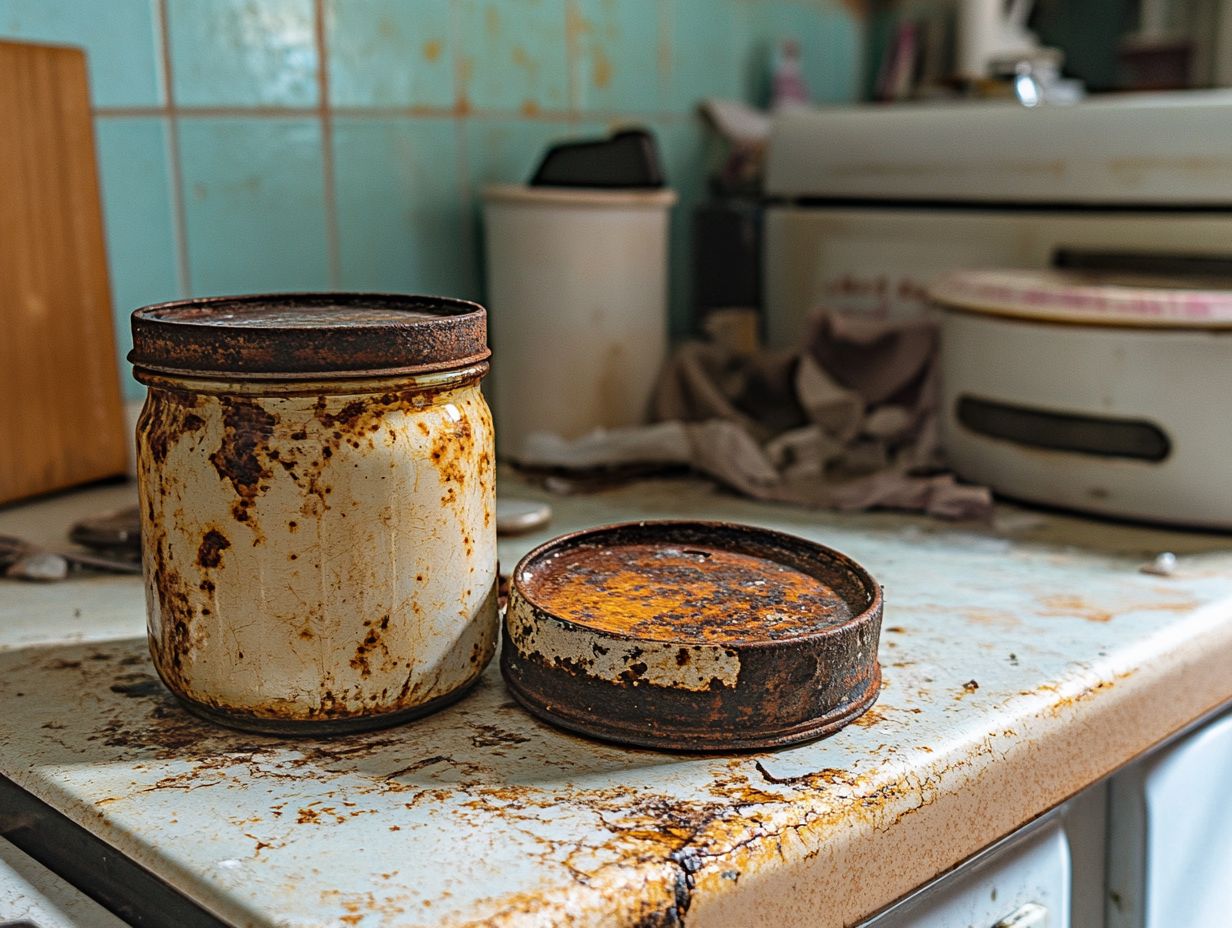
What are some common signs that you’re using faulty canning equipment?
Some common signs that you’re using faulty canning equipment include leaking jars, broken seals, and signs you’re using outdated canning supplies like improperly processed food.
If you notice any signs of faulty equipment, take action immediately to keep your food safe!
Why is it important to pay attention to signs of faulty canning equipment?
Watch for signs of faulty canning equipment. Ignoring them can spoil your food and cause illnesses.
How can I prevent faulty canning equipment?
You can prevent faulty canning equipment by regularly inspecting and maintaining your equipment.
Use high-quality jars and lids, and follow proper canning procedures.
What should I do if I suspect my canning equipment is faulty?
If you suspect your canning equipment is faulty, stop using it immediately.
Replace any damaged parts and discard jars that show signs of damage or improper sealing, which means the jar isn’t tight enough.
Can faulty canning equipment be repaired?
In some cases, faulty canning equipment can be repaired by replacing damaged parts or making adjustments.
Consult the manufacturer or a professional for help if needed.
Are there any warning signs to look out for when using canning equipment?
Look for unusual noises, excessive steam or pressure, and inconsistent temperatures.
If you notice any of these signs of improperly canned food, stop using the equipment right away! Address the issue before you continue canning to keep your food safe.


